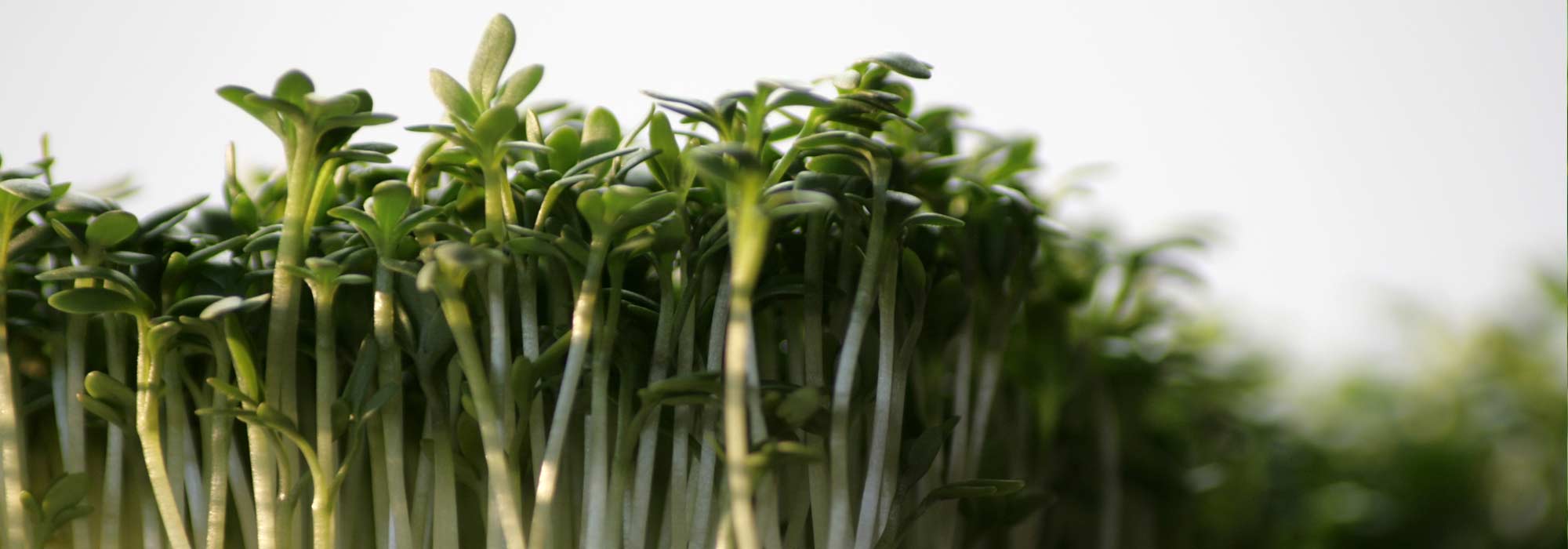
Watercress: sowing, growing, harvesting
Contents
Watercress in a nutshell
- Watercress is a herbaceous plant, a vegetable and condiment, from the family Brassicaceae.
- It is cultivated for its leaves that are peppery in flavour.
- Land cress and watercress, there are several species of cress that require specific growing conditions.
- Watercress needs soil kept well moist, and exposure without scorching sun.
- Rich in vitamins and minerals, low in calories, watercress is a food of high nutritional value.
A word from our expert
The term watercress actually encompasses various species of vegetable and condiment plants. Grown for their leaves, they all share a peppery and slightly spicy flavour.
We can distinguish between land cresses and semi-aquatic cresses. The widely cultivated watercress is one of the aquatic varieties, while the equally well-known land cress belongs to the species grown in soil, although these still require a continuously moist medium.
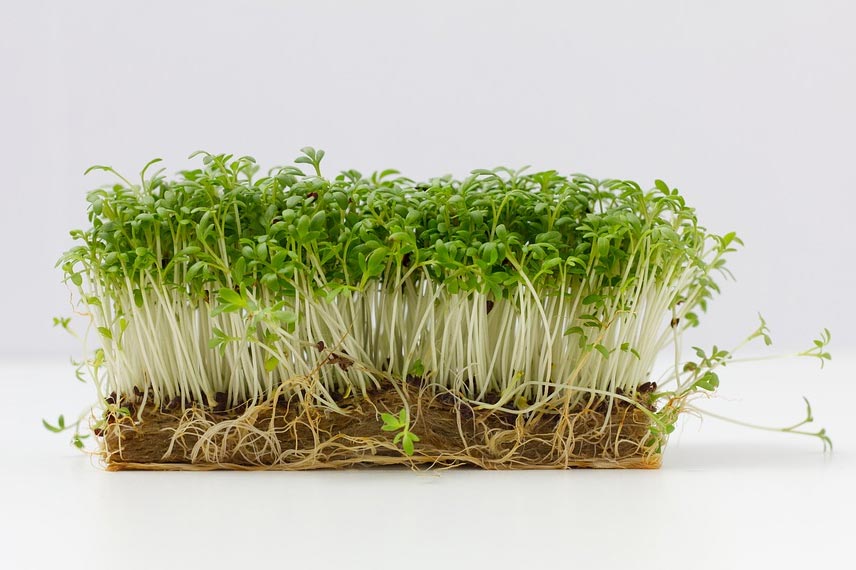
To ensure the success of your watercress crops, it is essential to understand the specificities of each species. Indeed, while land cress is an annual plant, garden cress is biennial, and watercress is a perennial. Similarly, their growing conditions and maintenance precautions are also quite specific.
Watercress is an herbaceous plant that lies somewhere between salad and herb. With its strong flavour, watercress is now considered a full-fledged vegetable that can be enjoyed throughout the seasons in winter soups and raw in salads (which is not dangerous as sometimes suggested!), as well as in countless other preparations.
Rich in antioxidants, vitamins, minerals, and beta-carotene, watercress is also known for its health benefits and virtues.
Description and botany
Botanical data
- Latin name Lepidium sativum, Nasturtium officinale, Barbarea verna
- Family Brassicaceae
- Common name watercress, brook cress, garden cress, land cress, winter cress, garden cress, small cress, cultivated cress
- Flowering variable depending on species
- Height from 10 to 80 cm
- Exposure sunny, semi-shaded, shaded (depending on regions)
- Soil type moist, light and humus-bearing
- Hardiness hardy
Originating from the Middle East, watercress is an herbaceous plant belonging to the Brassicaceae family (formerly known as crucifers), alongside cabbages, turnips, and mustard.
Commonly referred to as watercress, garden cress, land cress… its Latin name also varies from one species to another: Lepidium sativum, Nasturtium officinale, Barbarea verna…
In the 16th century, this herbaceous plant was primarily used for its medicinal properties, before gradually being introduced into the diet. Watercress is now considered a leafy vegetable in its own right, and it can be found all over the world.
There are several species of watercress, the most well-known being brook cress, winter cress, and garden cress.
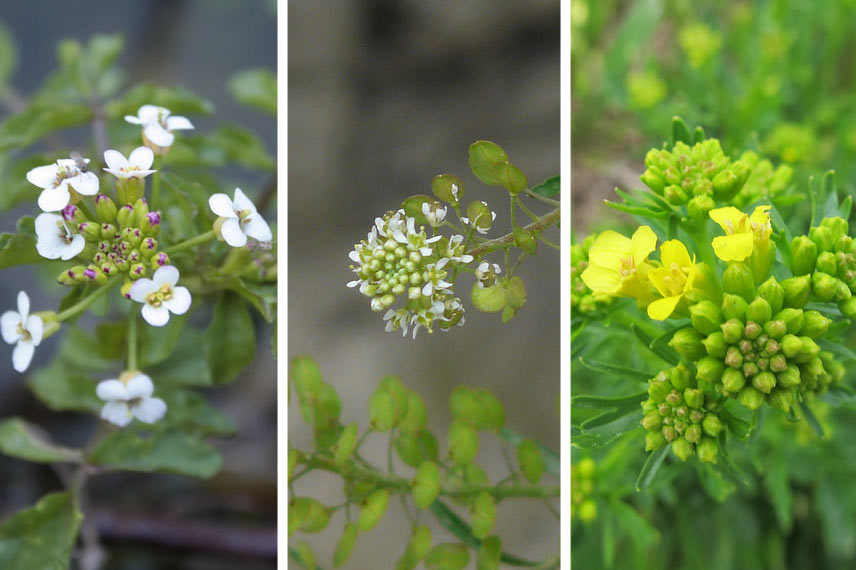
Nasturtium officinale | Lepidium sativum © Dinesh Valke – Flickr | Barbarea verna
- Brook cress, Nasturtium officinale, is a semi-aquatic watercress highly valued for its tender, juicy leaves, which are very tasty when raw. This is a perennial plant with a creeping stump, producing stems 10 to 50 cm tall, rooting at the base (with adventitious roots), ascending, thick, hollow, and branched. The leaves are pinnatisect (with divided leaflets), featuring obovate or oblong lobes. The flowering consists of white flowers arranged in loosely clustered groups, with petals twice as long as the calyx. The seeds of brook cress are ovoid and brown in colour.
- Winter cress, Lepidium sativum, is part of the land cresses. It has very small leaves when young that offer a very peppery flavour. This annual plant is glabrous and glaucous, producing a characteristic smell due to the presence of sulphur derivatives. Its branched stems grow to a height of 20 to 80 cm. The lower leaves are one to two times pinnatisect, while the upper leaves are linear, entire, and sessile. Winter cress produces small white flowers, upright fruiting pedicels against the axis, and small winged siliques (capsules containing the seeds).
- Garden cress, Barbarea verna, also known as land cress, produces shiny leaves with a rather peppery flavour. A biennial plant, garden cress produces upright, angular stems 30 to 60 cm tall. The radical leaves (which arise from the stump) are spreading and have an oval-oblong terminal lobe. The upper leaves are pinnate, with linear and entire lateral lobes. Garden cress produces large flowers, as well as very loose fruit clusters, and siliques measuring 4 to 6 cm long.
Watercress is an herbaceous plant rich in beta-carotene, vitamins C, A, B1, and B2, and minerals (calcium, magnesium, iron, copper).
“`
Read also
Green manures: why, how?Main species and varieties
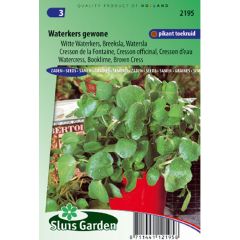
Watercress - Nasturtium officinale
- Height at maturity 20 cm
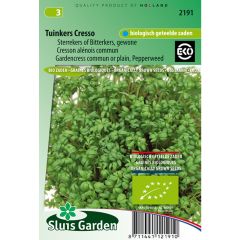
Garden Cress Organic - Lepidium sativum
- Height at maturity 15 cm
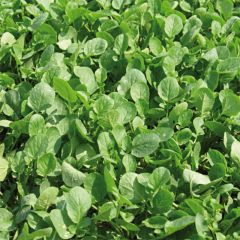
Organic Garden Cress - Barbarea verna
- Height at maturity 15 cm
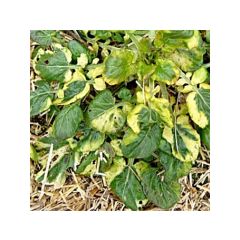
Barbarea vulgaris Variegata - Land cress
- Height at maturity 30 cm
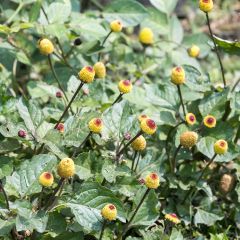
Para Cress yellow - Bredy Mafana - Spilanthes oleracea
- Flowering time September to November
- Height at maturity 15 cm
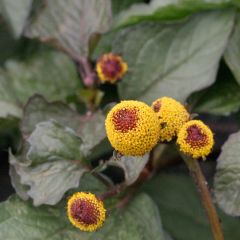
Cresson du Brésil Rouge Bio - Bredy Mafana - Ferme de Sainte Marthe seeds
- Flowering time September to November
- Height at maturity 15 cm
Discover other Watercress
View all →Available in 1 sizes
Available in 1 sizes
Available in 1 sizes
Available in 1 sizes
Available in 1 sizes
Available in 1 sizes
Available in 1 sizes
Available in 1 sizes
Available in 1 sizes
Sowing and planting watercress
If the different species of watercress have very different physical characteristics, they are not cultivated in the same way either. There are thus two different cultivation methods for watercress and land cress.
Where to install cress?
Land cresses, such as garden cress and curly cress, are planted in open ground or in pots, in sunny or partially shaded locations depending on your geographical area. If you live in the south, it is even better to place them in the shade.
Watercress is grown in floodable soil, in a pond, or in a container. In all cases, a shaded location is recommended.
When and how to sow cress?
Sowing of land cress occurs in a staggered manner between March and October, varying according to the species.
Sowing of watercress takes place between March and April under a frame or in a greenhouse, or directly in place between May and June.
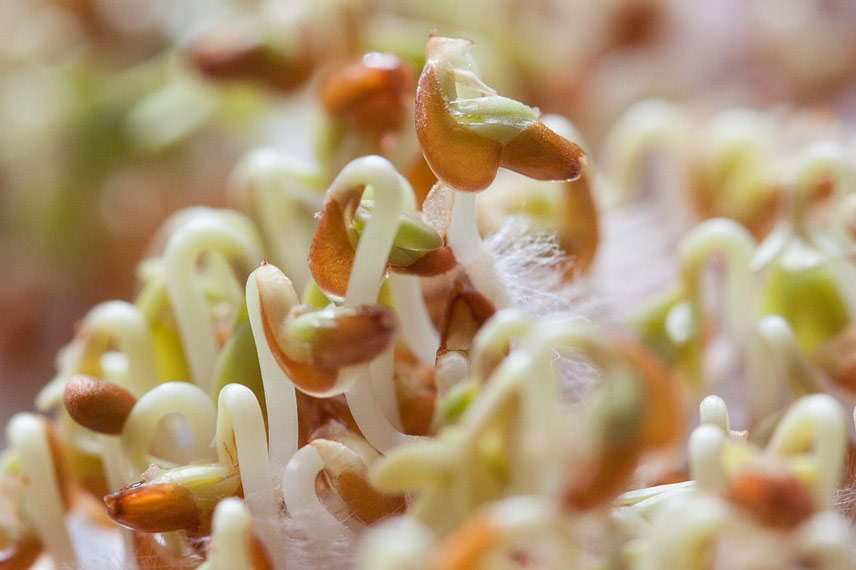
Sowing land cress
Sowing of land cress is done directly in open ground or in pots. Sow the seeds broadcast, or in rows spaced 10 cm apart.
Ensure that the soil remains moist throughout the germination period (and even afterwards). Germination is very quick, occurring within two to three days, provided the temperature reaches around 18°C.
Thin out your land cress plants once they have emerged, keeping one every 15 cm.
Sowing watercress
- Sow watercress in a seed tray under a frame or mini-greenhouse, barely covering the seeds
- Use a mixture of turf and compost kept very moist for this
- When the plants reach 2 cm, transplant them to their final location (open ground, floodable soil, or container)
- Transplant watercress into open ground
- Place your fountain cress plants in a pit 20 cm deep
- Lay a woven tarp at the bottom of the pit to slow down the percolation of watering water
- Use a substrate made of a mixture of garden soil and potting soil or compost
- Maintain a distance of 15 cm in all directions between watercress plants
Transplanting watercress in a container or pond
- Use a perfectly watertight container, or a pond 40 to 50 cm deep
- Fill it with 20 cm of substrate made of a mixture of soil and potting soil or compost
- Then fill with water until you obtain a mud bed on which the young plants are transplanted
- The water must be continuously renewed, or changed at least once a week
→ Read also: Growing cress in pots on your balcony.
Read also
Phacelia: sowing, growingHarvest and storage
Harvesting
Leaves of watercress are harvested about 3 weeks after sowing, when the young plants reach approximately 7 cm in height. Be sure to proceed regularly, as needed, to limit running to seed. To harvest watercress, cut the leaves at their base.
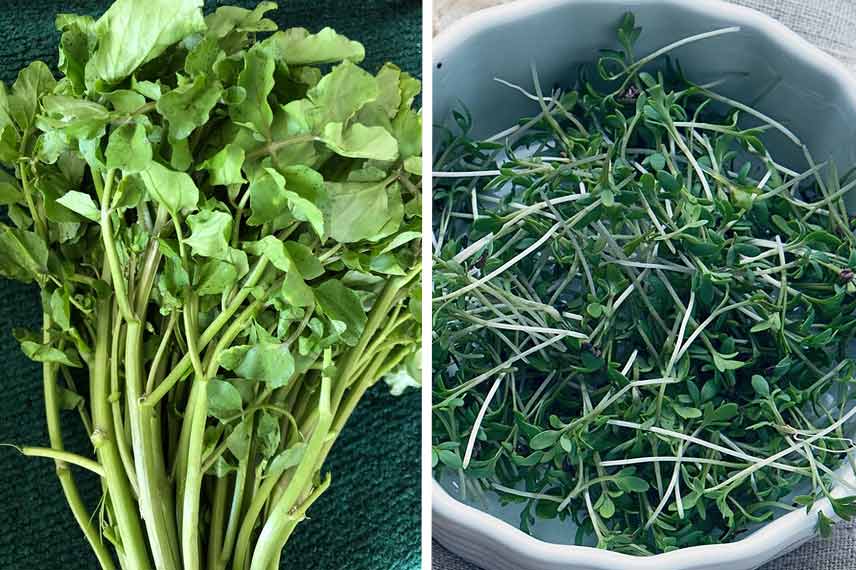
Note: by cutting the stems, you encourage the growth of new shoots.
Storage
Watercress leaves are delicate and begin to wilt just a few hours after picking. They can be stored for 2 to 3 days in the refrigerator, provided they are placed in a jar with their stems in water. Watercress leaves can also be frozen, although this process can be quite tedious. Therefore, it is preferable to prepare watercress veloutés that you can freeze afterwards. Leaves from certain species of watercress (such as Red Brazilian cress) can also be dried for consumption throughout the year.
Use of watercress
The benefits of watercress
Watercress is a low-calorie food and a vegetable with high nutritional value. It is particularly interesting for its vitamin content (provitamin A, vitamins B9 and C). A 75 g serving of watercress provides your body with:
- half of the recommended intake of vitamin C;
- and the full recommended intake of provitamin A (antioxidant).
These vitamins are very effective in countering the action of free radicals on your cells, thus preventing premature aging.
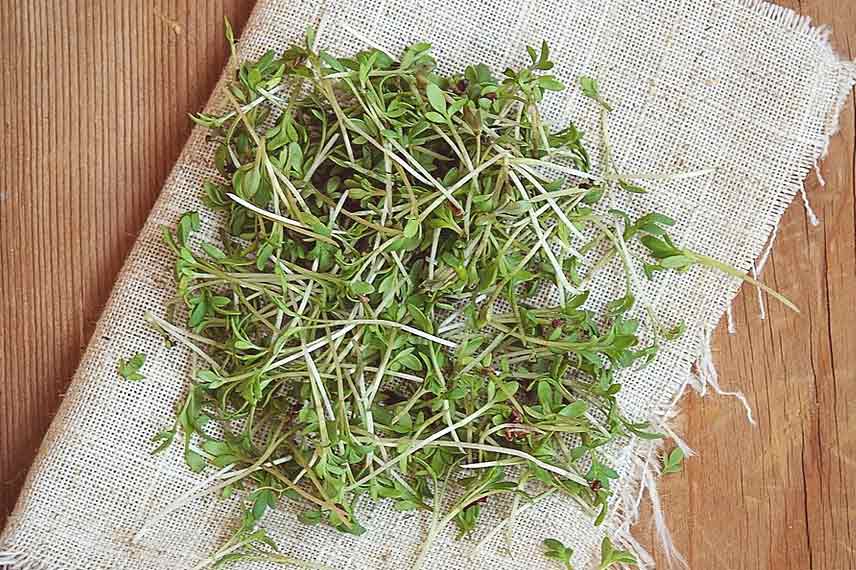
Watercress is also rich in minerals (iron, calcium, and magnesium). Its calcium and magnesium content is particularly beneficial for strengthening bone metabolism and contributing to the prevention of hypertension.
With only 17 kcal/100 g, watercress is one of the most diet-friendly vegetables, perfect for a light accompaniment. In the context of a diet, it is also very interesting for its gentle fibres that aid elimination.
Watercress is also recognised for its protective action against cardiovascular diseases due to the polyunsaturated fatty acids it contains. Its content of sulphur compounds is also thought to have anticancer effects.
However, the consumption of watercress may have contraindications in certain cases. It is therefore not recommended for individuals with urinary issues due to its diuretic properties. Similarly, watercress increases uterine contractions and should therefore be avoided by pregnant women. Finally, never consume watercress in excess, as it may hinder the proper absorption of iodine by your body.
Culinary uses
Watercress is undoubtedly the most commonly used species in cooking due to its tender, juicy stems and leaves with a mild mustard flavour.
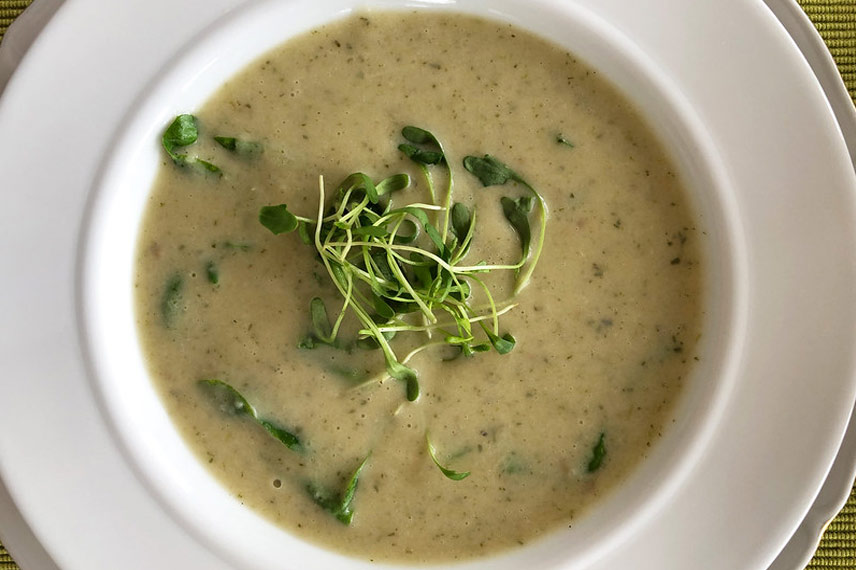
Watercress Soup © Rosmarie Voegtli – Flickr
Watercress soups and broths are very famous. However, watercress can also be eaten raw, making delicious salads enhanced by its peppery flavour. It is also used in sandwich or canapé fillings, where it pairs perfectly with smoked fish or fresh goat cheese.
Used raw and chopped, watercress can be used as a condiment to flavour your potato salads or an omelette. If finely chopped, it can also be added to a vinaigrette to create a watercress dressing.
Watercress can also be consumed like spinach, cooked and seasoned with butter. It can also be added to mashed potatoes, transforming it into watercress mash.
Note: watercress must be thoroughly sorted and washed before consumption, even if it is cultivated plants. Indeed, watercress can harbour a parasite called “liver fluke,” which can cause certain serious illnesses.
Care and maintenance of watercress
Maintaining watercress
Watercress requires constantly moist soil. Otherwise, you must water it very regularly.
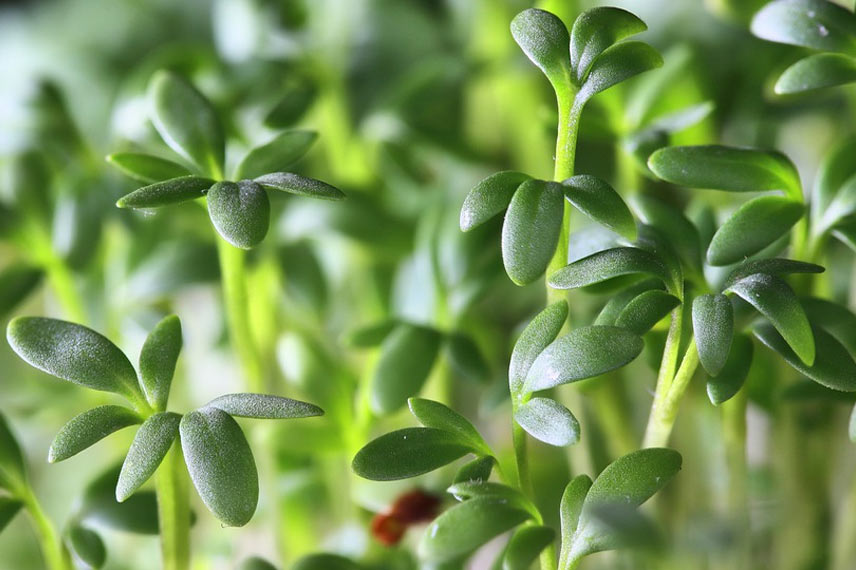
Garden watercress
Note that terrestrial species prefer light, humus-bearing soils. In autumn, apply well-matured compost by scratching to a depth of 5 cm. Always start by loosening the soil before making this addition.
To reduce the chore of weeding, you can mulch the soil around your watercress plants once they are well developed. Ideally, use a mulch made of fine successive layers of grass clippings mixed with fallen leaves. This mulching will protect your plants while limiting water evaporation, which will also positively impact your watering.
Tip: note that green manures are also very beneficial for growing watercress. Indeed, interspersing a green manure between two crops helps to cover and nourish the soil depleted by previous plantings. When we talk about green manures, we often think of white mustard. However, this is not the most suitable here, as it belongs to the Brassicaceae family, just like watercress. To respect the principle of crop rotation, it is better to grow phacelia as a green manure after a watercress crop.
Maintenance of fountain cress
Fountain cress is a semi-aquatic species. Water management is crucial for its well-being. If grown in open ground, watering must be diligently monitored. If grown in a container or flooded basin, its water must be continuously renewed or changed once a week.
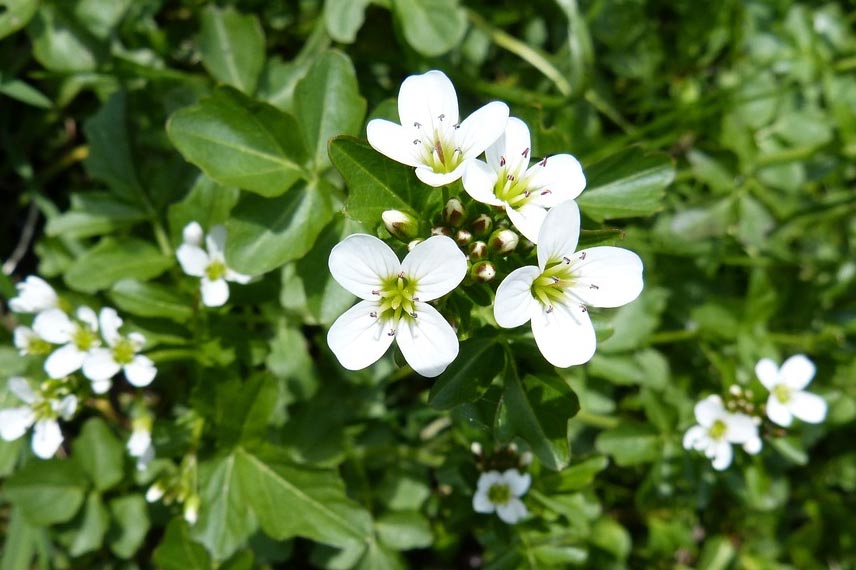
Fountain cress
Fountain cress is a perennial plant. In winter, if frost is forecast, protect it with a forcing cover.
Diseases and potential pests of watercress
Watercress is susceptible to flea beetles, small black beetles that appear as soon as the temperature reaches 20°C. This pest then perforates the foliage of the plant. As the proliferation of flea beetles is largely favoured by drought, frequent watering and good mulching can help prevent attacks.
Useful resources
- Find all the varieties of watercress to grow in your vegetable garden on the Promesse de Fleurs online shop.
- Also discover our complete plant profile on purslane.
- Subscribe!
- Contents































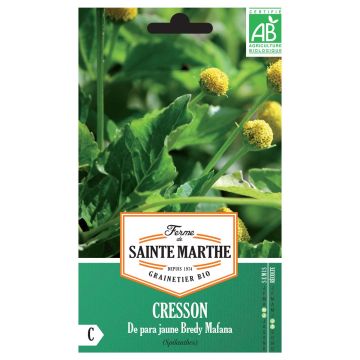


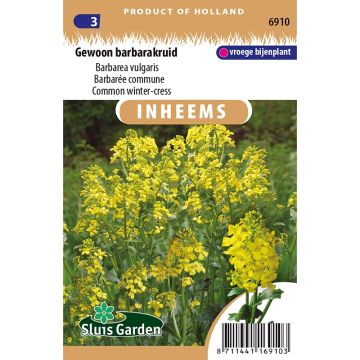

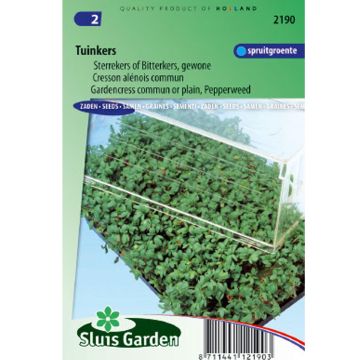

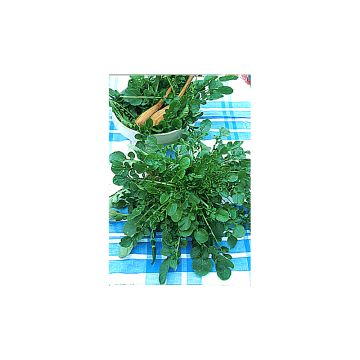


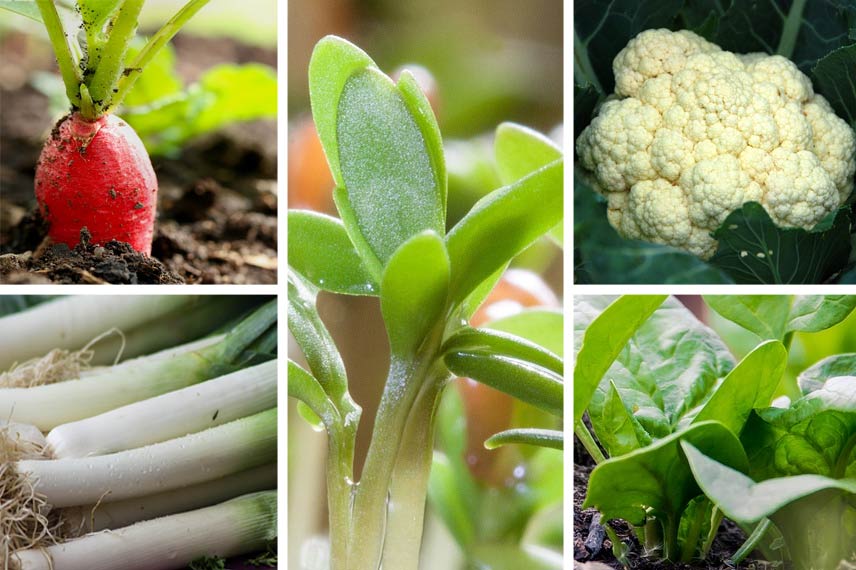
Comments